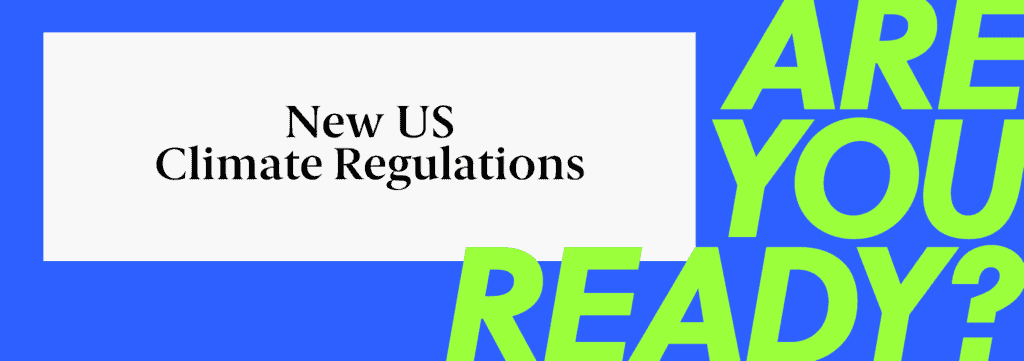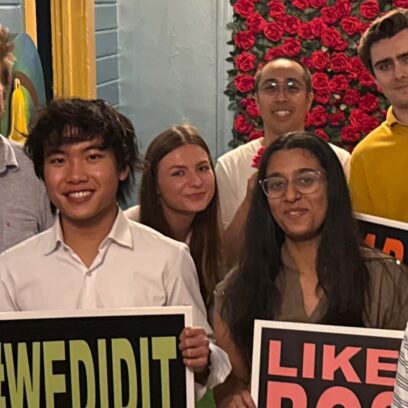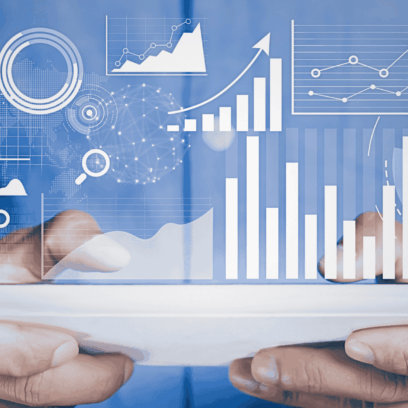How Everyone Is a Sustainability Stakeholder


As climate-related disclosure and mitigation requirements continue to evolve, understanding the latest regulatory landscape is essential for US companies. In this webinar, we cut through the jargon to provide clear insights into emerging climate-related requirements, breaking down two key federal proposals and one EU regulation impacting some US-based companies. Join us to stay informed and prepared for what’s ahead in climate compliance.
To drive successful, sustainable action, every team member and business department must play a pivotal role.
When a new project or initiative lands on your desk, how well do you understand its stakeholders? Chances are you consciously or subconsciously develop a stakeholder map to ensure that you can engage all relevant parties, and consider their interests regularly throughout the process. Now—how often do you do this for sustainability? Sustainability is an overarching initiative, and the task of transitioning to a net-zero future is one that needs every single department working in harmony. With the past summer seeing a record-breaking rise in consecutive heatwave days, heat-related fatalities, soaring insurance costs (crop insurers paid out a record $19.1 billion to farmers in 2022), and extreme weather events, it is impossible to be unaffected by climate change. If the definition of a sustainability stakeholder is someone that has an interest in, is affected by, or can influence the sustainability outcomes of an initiative, that means that every single person on your team has a stake in your sustainability practices.
In this blog post, we explore how each business function can influence your sustainability strategy, as well as the challenges and benefits of a holistic approach.
Finance & Governance
Financial stability and governance are at the heart of sustainable business practices. With investors increasingly interested in businesses that demonstrate environmental stewardship, the financial and governance aspects of sustainability have never been more critical.
- LEADERSHIP: Leadership sets the tone for the entire organization. When leadership prioritizes sustainability, it sends a clear message about the company’s values and strategic direction.
- ACCOUNTING: Accounting teams play a crucial role in tracking and reporting on sustainability-related financial metrics, ensuring the financial implications of sustainability initiatives are accurately captured.
- LEGAL/RISK: The legal and risk departments navigate the regulatory landscape of sustainability, helping the company understand its legal obligations and manage associated risks.
- SHAREHOLDERS & INVESTORS: Investors are increasingly looking at sustainability performance. Engaging with this group ensures they understand the company’s commitment to sustainability.
Operations & Infrastructure
Operational efficiency and infrastructure are foundational to a company’s sustainability journey. From the day-to-day running of a business to the physical spaces they occupy, these aspects are pivotal.
- FACILITIES MANAGEMENT: This team drives sustainability in the day-to-day operations of physical spaces, from energy-efficient lighting, to the use of renewable natural gas (RNG), to waste management.
- IT/TECHNOLOGY: IT supports sustainability by optimizing data centers for energy efficiency, promoting digital solutions, and managing e-waste responsibly.
Supply Chains & Product Development
From sourcing raw materials to developing sustainable products, these departments significantly influence a company’s carbon footprint, especially when addressing Scope 3 emissions.
Consider how Fierce Whiskers, rooted in Austin, collaborates with local grain suppliers and chooses white oak barrels from Kelvin Cooperage to ensure a sustainable whiskey production process; or how BeatBox Beverages has not only formed strategic partnerships for waste management and efficient water use but has also ingeniously incorporated a byproduct of orange juice production as a core ingredient, showcasing innovation in sustainability.
- RESEARCH & DEVELOPMENT (R&D): R&D teams drive innovation in sustainable products, services, and processes, leading to breakthroughs that reduce environmental impact.
- PROCUREMENT: Perhaps you’ve already established a green supplier policy, or you’re actively collecting supplier data for your Scope 3 carbon emissions. Your procurement team is critical in ensuring the operations team has the right resources and in supporting those resources to make progress toward your environmental goals.
“I admired its purpose, ideas, brands, values and reputation. The concept of doing well by doing good. Unilever’s commitment to sustainable living is proof that value creation and making a positive impact on people and planet are not at odds. They are intrinsically linked.”
Fabian Garcia, President of Personal Care at Unilever, on why he wanted to work there

FW Sustainability Report
Learn more about how Fierce Whiskers has made sustainable choices every step of the way by downloading its full sustainability report.
Communication & Engagement
Clear communication and engagement strategies ensure that sustainability initiatives are understood, adopted, and championed both internally and externally.
- CUSTOMER SERVICE: These teams gather feedback on sustainability initiatives and educate customers on sustainable product features or company initiatives.
- SALES & MARKETING: Sales teams promote sustainable products and services, while marketing communicates the company's sustainability efforts to the broader public.
People & Culture
The human aspect of sustainability is often overlooked, but it's the people within an organization that drive its sustainability initiatives forward.
- HUMAN RESOURCES (HR): HR embeds sustainability into the company culture, integrating it into training programs, employee benefits, and recruitment processes.
The Benefits and Challenges of a Holistic Approach
Some Challenges
Integrating sustainability across departments does not come without its challenges. You may feel or see first-hand that:
- Having multiple voices in the room can slow down decisions or make it hard to reach a consensus.
- Departments and stakeholders may have conflicting interests or priorities.
- The sheer volume of ideas and feedback can be overwhelming and make it hard to focus.
- If not managed correctly, a large group can sometimes end up taking a herd mentality rather than a critical view.
- There may be a disconnect between different communication styles or language, for instance between procurement and sustainability teams.
Some Benefits
Yet, the benefits, which range from resilient supply chains to helping future-proofing against environmental risks, far outweigh these initial challenges. By directly engaging multiple stakeholders, you can expect stronger commitments—particularly when people feel their views are being heard and acted on—as well as a broader range of ideas, innovations and solutions, proactive risk management with all angles considered, and a stronger narrative. With everyone aligned, the organization can present a unified front and consistent, credible messaging. Note: while alignment is important, not all stakeholders will be engaged in the same way. While every stakeholder can and should have a role in sustainability, those roles often look different depending on the needs and operating structure of an organization.
Internal vs. External Stakeholders
Navigating the nuances of sustainability requires understanding the distinct dynamics of internal and external relationships. Internally, it's about fostering a culture of sustainability, ensuring every department aligns with the company's environmental goals. Externally, it's about building bridges with stakeholders, from suppliers to local communities. By considering every viewpoint, you can craft a comprehensive strategy and communicate effectively, propelling your company closer to its environmental sustainability goals.
Educating Employees & Other Stakeholders
To prepare each department for activities such as a materiality assessment, carbon accounting, or sustainability reporting, timing and resource planning is critical. It requires a comprehensive approach, covering education, process integration, and collaboration. In a follow up post, we’ll share actionable steps you can take to engage with employees and stakeholders within your organization to help achieve your company’s environmental goals.
Conclusion
Every team member is a sustainability stakeholder, and to truly make a difference in reducing your company's environmental impact, a holistic approach is essential. This involves education, process integration, collaboration, and resource planning. Discover how CarbonBetter can guide you in fostering a structured strategy that not only promotes departmental ownership but also ensures timely, accurate reporting. Contact us today today to get started.
Sustainability isn't just an environmental concern; it's a business one. Every department, from finance to operations, plays a role in shaping a company's carbon footprint. By integrating sustainability across all departments, companies can ensure a cohesive and effective approach to their green initiatives.
Internal relationships focus on aligning departments with sustainability goals, ensuring that the company's practices are green from the inside out. External relationships, on the other hand, involve collaborating with suppliers, local communities, and other stakeholders. These collaborations can amplify a company's sustainability efforts and provide valuable feedback and opportunities.
Different departments might have varied priorities, knowledge levels, or resources. Aligning everyone under a unified sustainability goal can be challenging. However, with clear communication, education, and collaboration, these challenges can be overcome.
Open dialogues, regular updates, and tailored communication strategies can ensure that all stakeholders, whether internal or external, are informed, engaged, and aligned with the company's sustainability goals.
CarbonBetter offers a range of services, from helping businesses measure their carbon footprint to navigating the voluntary carbon market. We provide guidance on setting sustainability goals, understanding legislation, and creating comprehensive sustainability reports. Contact us today to learn more.


